Understanding Clay Soil and How to Improve It: Proven Success Strategies
- June 5, 2024
- 0 comment
Explore proven success strategies in Understanding Clay Soil and How to Improve It to boost your garden’s health and productivity. Unlock the potential of your garden with our expert guide on understanding and improving clay soil.

Struggling with heavy, dense clay? You’re in good company. Our proven strategies are designed to transform challenging soil into a foundation for lush growth and vibrant plant health. Start making clay soil work for you today.
Table of Contents
- What is Clay Soil?
- Identifying Clay Soil in Your Garden
- Challenges of Gardening in Clay Soil
- Proven Success Strategies for Improving Clay Soil
- Long-Term Management and Care
- Conclusion
- FAQs
What is Clay Soil?

Clay soil is composed of microscopic particles smaller than 0.002 mm in diameter, making it one of the finest soil textures in the soil classification system. Its composition primarily includes minerals like montmorillonite, illite, and kaolinite, which contribute to its unique properties.
- Texture and Composition: When wet, clay soil feels smooth and sticky, which is due to the high surface area of its particles. This texture makes it plastic and malleable, allowing it to be easily shaped and compacted. When dry, it forms a hard, solid mass that can be challenging to break up.
- Nutrient Retention: Clay soil excels in nutrient retention due to its negatively charged particles, which attract and hold positively charged ions (cations) such as potassium, magnesium, and calcium. This cation exchange capacity (CEC) is typically much higher in clay soils compared to sandy or loamy soils.
- Water Retention and Drainage: Clay’s fine texture allows it to hold water well, making it slow to dry out. However, this also means it has poor drainage and aeration, which can lead to issues like waterlogging. The slow permeability rate can significantly impact root growth and plant health if not managed properly.
- pH and Chemical Properties: Clay soils tend to have a higher pH due to their mineral composition and the ability to buffer changes in soil acidity. This characteristic can influence the availability of different nutrients to plants.
Here is a detailed table comparing clay soil to loamy and sandy soils, which provides insights into its physical and chemical properties:
| Property | Clay Soil | Loamy Soil | Sandy Soil |
|---|---|---|---|
| Particle Size | <0.002 mm | 0.002 – 0.05 mm | 0.05 – 2.0 mm |
| Texture | Sticky, smooth when wet | Soft, crumbly | Gritty, loose |
| Water Retention | High | Moderate | Low |
| Drainage | Poor | Good | Excellent |
| Cation Exchange Capacity (CEC) | 30-40 meq/100g | 10-25 meq/100g | 3-5 meq/100g |
| pH | Often >7 (alkaline) | 6-7 (slightly acidic to neutral) | 5-6 (acidic) |
Note: The values for Cation Exchange Capacity (CEC) and pH are typical ranges and can vary based on specific soil conditions and geographic regions.
Identifying Clay Soil in Your Garden

To effectively manage and improve your garden’s soil, accurately identifying clay soil is a critical first step. Clay soil, known for its unique physical and chemical properties, can significantly impact plant growth. Here are detailed aspects and tests to confirm its presence:
- Texture: Clay is distinctly smooth and pliable when moist, easily forming a long, thin ribbon between your fingers. This test, often called the “ribbon test,” is a quick way to assess soil type. If you can form a ribbon longer than two inches before it breaks, it’s a strong indicator of high clay content.
- Color: Clay soil generally appears darker than other soil types. This dark coloration is due to its ability to retain organic materials and moisture more effectively than sandier or loamier soils, which often look lighter.
- Water Retention: Clay has excellent water retention properties, which can be both a benefit and a drawback. After watering or rainfall, clay soil takes much longer to dry out compared to other soil types, often remaining soggy and waterlogged. This characteristic can be observed by the slow disappearance of puddles or the prolonged dampness of the soil surface.
- Density and Compaction: Clay soils are denser than other soil types and can become very compacted. This compaction can make the soil tough to dig or till, especially when dry.
Practical Soil Tests
In addition to observational methods, practical tests can scientifically confirm the presence of clay soil:
- The Jar Test: Fill a clear jar with one-third garden soil and two-thirds water, then shake vigorously and let it settle for several hours or overnight. The soil will stratify into layers with sand at the bottom, silt in the middle, and clay at the top. A significant clay layer indicates a high percentage of clay.
- Soil Permeability Test: Dig a hole about one foot deep and wide, fill it with water, and monitor how quickly it drains. Slow drainage over several hours suggests high clay content, as clay particles impede water flow.
Here’s a table illustrating key identification tests and their interpretations:
| Test Method | Description | Clay Soil Indication |
|---|---|---|
| Ribbon Test | Soil is rolled into a ribbon | Forms ribbon >2 inches long |
| Color Observation | Visual assessment of soil color | Dark color due to high organic content |
| Water Retention Test | Observation post-watering | Soil remains soggy for prolonged periods |
| Jar Test | Soil and water shaken in a jar | Distinct, thick top layer of fine particles |
| Permeability Test | Water drainage rate in a dug hole | Very slow drainage |
Challenges of Gardening in Clay Soil
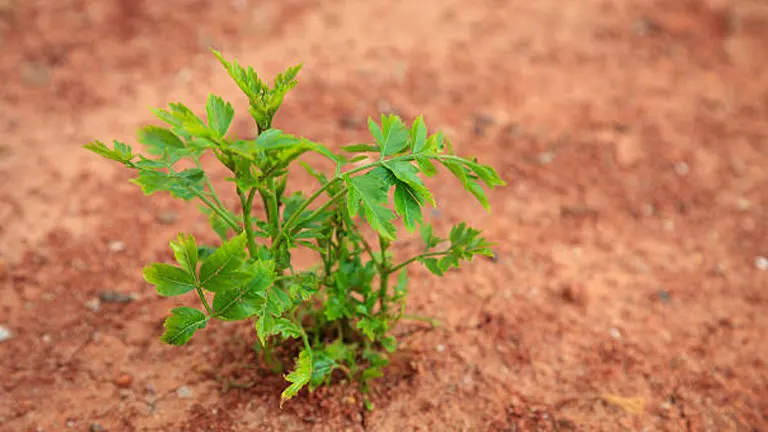
Clay soil, while nutrient-rich, presents several physical challenges that can significantly impact gardening efforts. Understanding these challenges in depth can help gardeners develop more effective strategies for dealing with clay soil.
- Poor Drainage: The fine particles of clay soil fit closely together, leaving little room for air or water to penetrate. This density leads to slow water percolation, causing waterlogging after rains. Waterlogged soil can lead to anaerobic conditions, which are harmful to root health and inhibit plant growth.
- Compaction: Due to its density and moisture retention, clay soil is particularly prone to compaction. When compacted, the soil’s already small pore spaces are further reduced, severely limiting oxygen availability to roots and reducing the soil’s ability to drain properly.
- Difficult Working Conditions: The physical properties of clay soil make it challenging to work with. It is sticky and pliable when wet, making it difficult to till or aerate without causing further compaction. When dry, it becomes extremely hard and cloddy, which can be tough to break up and work into a plantable condition.
- Nutrient Availability Issues: Despite its high nutrient content, the tightly bound nature of clay can make these nutrients less available to plants. The high cation exchange capacity (CEC) of clay means it can hold onto nutrients tightly, sometimes too tightly for plants to access easily.
- Thermal Insulation: Clay soil tends to have higher thermal mass, meaning it heats up and cools down more slowly than lighter soils. This can delay the warming of soil in the spring, affecting planting schedules and growth rates.
To address these challenges effectively, gardeners need targeted strategies that enhance soil structure, improve drainage, and ensure optimal conditions for plant growth. Here’s a table illustrating the properties of clay soil that contribute to these challenges:
| Soil Property | Challenge | Impact on Gardening | Mitigation Strategy |
|---|---|---|---|
| Fine Particle Size | Poor Drainage | Leads to waterlogging | Add organic matter, create raised beds |
| High Density | Compaction | Reduces aeration and drainage | Regular aeration, avoid working soil when wet |
| Sticky when wet | Difficult Working Conditions | Hard to till and plant | Amend with grit/sand, work soil at correct moisture |
| High Cation Exchange Capacity | Nutrient Availability Issues | Nutrients bound tightly | Apply chelated fertilizers, adjust pH as necessary |
| High Thermal Mass | Slow Temperature Changes | Delays spring warming | Use black plastic to warm soil, adjust planting schedule |
Proven Success Strategies for Improving Clay Soil
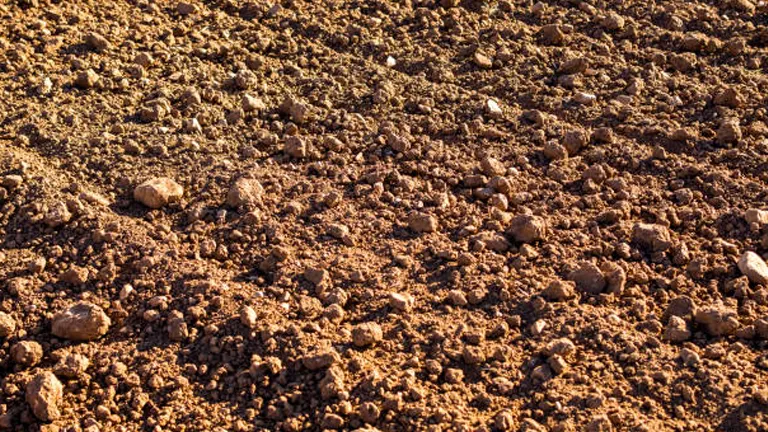
Improving clay soil involves amending its structure and managing its natural tendencies. Here are some proven strategies:
- Adding Organic Matter:
- Types and Benefits: Incorporating organic matter such as compost, leaf mold, or well-rotted manure can dramatically improve the structure of clay soil. These materials help separate the fine clay particles, thereby enhancing aeration and drainage.
- Application: Spread organic matter over your soil and gently till it in up to a depth of 6-12 inches. This is best done during the fall or when the soil is dry enough to work in the spring.
- Enhancing Soil Structure:
- Aeration Techniques: Regular aeration helps alleviate compaction. For small gardens, manual aerators or garden forks can be used to puncture the soil and create air channels.
- Raised Beds: Constructing raised beds filled with a mix of clay soil and organic matter can prevent compaction as it discourages walking on the beds and improves drainage.
- Proper Water Management:
- Irrigation Practices: Avoid overhead sprinkling which can compact the soil surface further. Instead, use drip irrigation or soaker hoses to deliver water directly to the root zone where it’s needed.
- Improving Drainage: In extremely dense clay areas, consider installing drainage tiles or creating a French drain system to help remove excess water efficiently.
- Choosing the Right Plants:
- Suitable Varieties: Some plants thrive in clay soil, including many native grasses, perennials like daylilies and asters, and shrubs such as viburnum and hydrangea.
- Adaptation Tips: Select plants that are not only adapted to grow in clay soil but can also help improve its structure over time, such as deep-rooted plants that naturally break up compacted layers.
Implementing these strategies will not transform clay soil overnight, but with consistent application, significant improvements can be seen. This not only enhances the soil’s workability and fertility but also boosts the overall health and appearance of your garden.
Long-Term Management and Care

Effective long-term management of clay soil involves a series of strategic actions designed to sustain its fertility and structure, ultimately supporting plant health and productivity. Here’s how to ensure your clay soil remains in optimal condition:
- Regular Organic Matter Addition:
- Seasonal Adjustments: Each fall, integrate organic materials such as compost, aged bark, or biochar into the soil. These materials not only replenish essential nutrients but also improve the soil’s physical structure by increasing porosity and enhancing water infiltration.
- Benefits: Regular addition of organic matter can increase soil organic carbon levels, a key indicator of soil health. This practice can boost the cation exchange capacity (CEC), enhancing the soil’s ability to retain essential nutrients.
- Mulching:
- Strategy: Apply a layer of organic mulch around plants annually. Suitable materials include straw, shredded leaves, or wood chips.
- Impact: Mulch helps maintain optimal moisture levels, suppresses weed growth, and as it decomposes, it further contributes to the organic matter content of the soil, gradually improving its quality.
- Monitoring Soil pH and Nutrients:
- Soil Testing: Perform soil tests every two to three years to monitor pH levels and the balance of key nutrients such as nitrogen, phosphorus, and potassium.
- Adjustments: Tailor your soil amendments based on test results. For instance, to correct acidic soils, apply lime; for alkaline soils, sulfur may be appropriate. This helps maintain a pH conducive to plant health and nutrient availability.
- Avoiding Soil Compaction:
- Traffic Management: Minimize foot and vehicle traffic on wet soil to prevent compaction. Design your garden with paths or use stepping stones to protect soil structure.
- Tillage Practices: Engage in minimal tilling practices. Use tools like broadforks to gently aerate the soil without disrupting it deeply, preserving both structure and the vital microbial ecosystem.
Soil Management Goals and Metrics
To provide clarity on the outcomes of these practices, here’s a table detailing key soil metrics and goals for managing clay soil:
| Management Practice | Metric | Goal | Impact on Soil Health |
|---|---|---|---|
| Organic Matter Addition | Organic Carbon Levels | Increase by 1-2% over 5 years | Enhances CEC, nutrient retention, and structure |
| Mulching | Soil Moisture Content | Maintain 20-30% moisture during dry months | Prevents drying out and cracking |
| pH and Nutrient Monitoring | Soil pH | Maintain pH between 6.0 and 7.5 | Optimizes nutrient availability to plants |
| Avoiding Compaction | Bulk Density | Reduce by 10% within 3 years | Improves root penetration and water infiltration |
Related Post
- How to Build a Barn: A Step-by-Step Guide for Beginners
- How to Build a Sustainable Compost Bin: Easy and Eco-Friendly DIY
- How to Fertilize Bougainvillea: A Complete Guide for Stunning Blooms
- How to Fertilize Apple Trees: Essential Tips for a Bountiful Harvest
- How to Fertilize Lemon Trees: Secrets for Thriving Citrus
- How to Fertilize Avocado Tree: A Step-by-Step Guide for Lush Growth
- 10 Best Bow Saws to Buy in 2024: Top Picks for the Money
- Best Miter Saw For Beginners
- Top 10 Pruning Saws to Buy in 2024: Best for the Money
- 7 Best Pocket Chainsaw
Conclusion
Understanding and improving clay soil is not just about short-term fixes; it’s about embracing a holistic approach to garden management that promotes soil health and plant vitality. By implementing the strategies discussed, gardeners can turn the challenges of clay soil into opportunities for flourishing gardens.
FAQs
- What is the quickest way to improve clay soil in a new garden?
The quickest way to improve clay soil is by adding organic matter such as compost, aged manure, or leaf mold. Spread a thick layer over the soil and work it in lightly with a fork. This will help improve drainage and aeration and can be done seasonally. - Can you plant immediately after amending clay soil?
It’s best to wait a few weeks after amending clay soil before planting. This allows the organic matter to begin breaking down and integrating with the soil, enhancing its structure and nutrient availability. - How often should I aerate clay soil to prevent compaction?
Aerate clay soil at least once a year, preferably in the spring or fall when the soil is dry enough to work but moist enough to avoid dust. For areas with heavy foot traffic or under lawns, consider aerating twice a year. - Are there any specific mulches that work best for clay soils?
Organic mulches like straw, wood chips, or bark are ideal for clay soils. They not only suppress weeds but also gradually decompose, adding organic matter to the soil and improving its structure over time. - What is the best way to manage water in gardens with clay soil?
Install drip irrigation systems to deliver water directly to the base of plants. This method reduces water waste and prevents the surface compaction that can occur with overhead watering. Additionally, consider shaping the land slightly to encourage runoff from heavier rains. - Can adding sand improve clay soil?
Contrary to popular belief, adding sand to clay soil can make it worse by creating a cement-like texture unless it’s done in very large quantities. It’s more effective to add organic matter to improve texture and drainage. - What are some indicators that clay soil is improving?
Signs of improvement include easier digging, quicker water drainage after rain, less surface cracking during dry periods, and more vigorous plant growth. Soil that feels softer and crumblier also indicates better structure. - How can I tell if the pH of my clay soil needs adjusting?
Regular soil testing (at least every two to three years) is the best way to monitor pH levels. If plants are showing signs of nutrient deficiencies (yellowing leaves, stunted growth), despite good soil management, pH might be off. Amendments like lime or sulfur can adjust pH as needed based on test results.
With these proven strategies at your disposal, you’re well-equipped to turn the challenges of clay soil into opportunities for a thriving garden. Embrace the journey, and watch as your efforts bring lush, vibrant growth to life. Happy gardening!

Benjamin Brooks
Forestry AuthorGreetings! I'm Benjamin Brooks, and my journey over the past 15 years has revolved around the fascinating realms of content creation, expertise in snow clearing, and the intricate world of lumberjacking and landscaping. What began as a simple curiosity about the natural world and heavy machinery has evolved into a passionate profession where my love for crafting words intertwines seamlessly with my lumberjacking and garden skills.



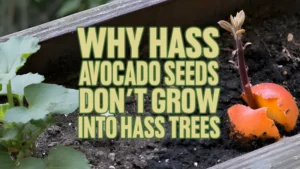
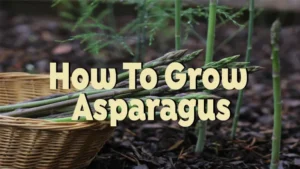


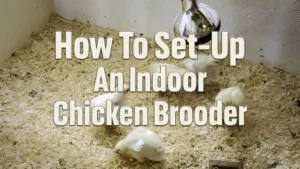

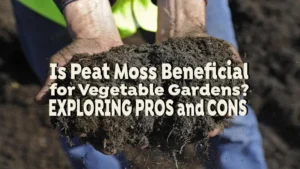



Leave your comment